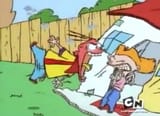>>717313631 (OP)
The game engages the player to solve it's problems in order to reach the end of the program. This can often involve story, but gameplay is most often the primary motive to keep engaging with a game. When a game is not fun, the player becomes frustrated or bored, and does not feel a desire to continue playing the game. When a game is fun, it has succeeded in forming a psychological connection with the player. The player subconsciously considers the unfinished game to be unfinished business, and continues in the habit. This habit forms through activation of the brain through a combination of art and mechanics that create various forms of triggering gratification.
Games larger in scale most often have a slower buildup to satisfcation, and the draw is the unfinished business principle. There is so much more to do, and doing is satisfying, therefore more must be done. This is the quintessential essence of fun. Smaller games often have simpler gameplay, in which the trigger of dopamine release is quicker, but can become tired faster due to a lack of depth to generate interest from. This is also why many games now are open world for the sake of it: they generate a pretense of being interesting while not actually being so. The best games can do both: interest the player enough to keep them coming back, and engage them enough to keep them enjoying the game in the moment. Story is largely ancillary, but all people love stories, and it makes a nice side dish along with the actual game. A game can work without a story, you can't sell a game that has a story but no game.
Elaborate enough for you, OP?
















